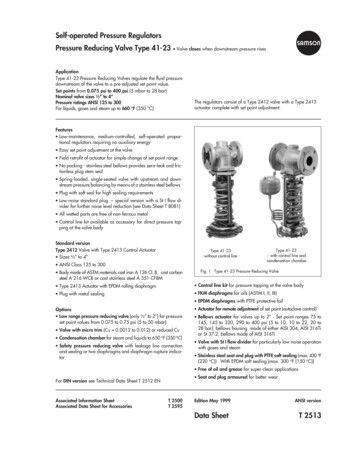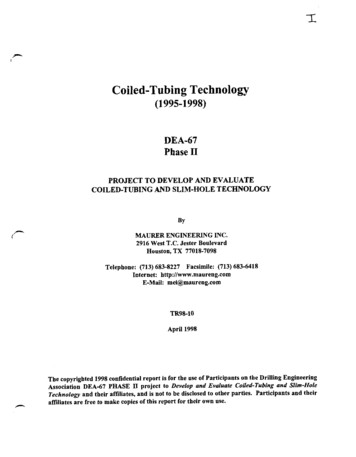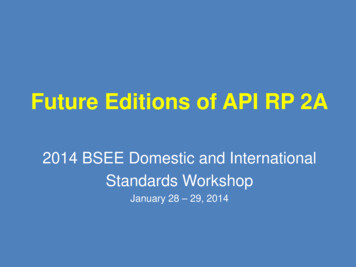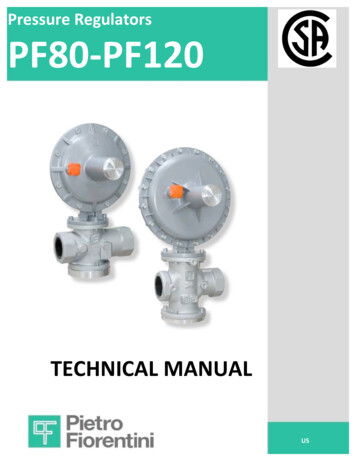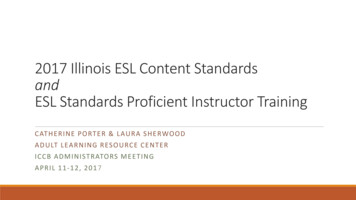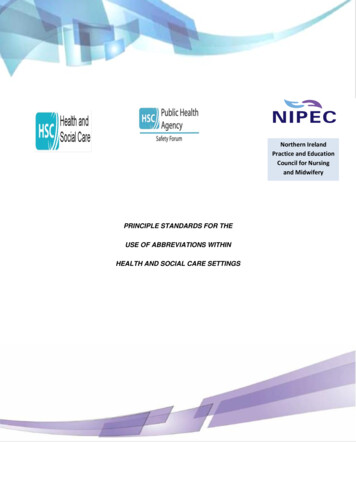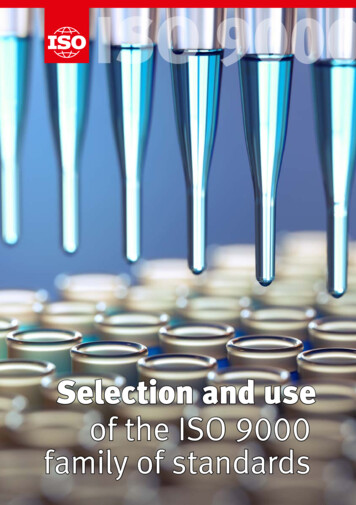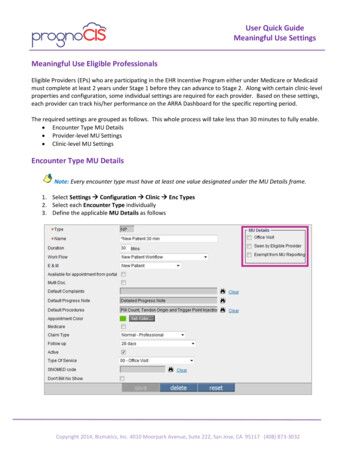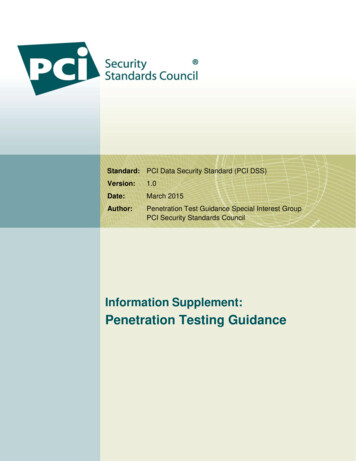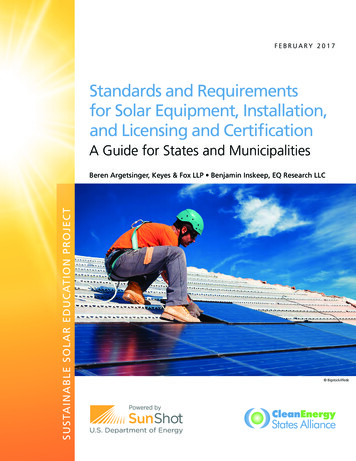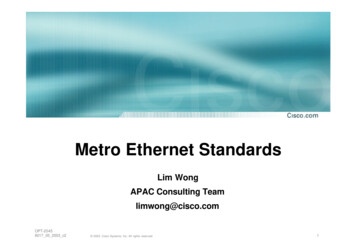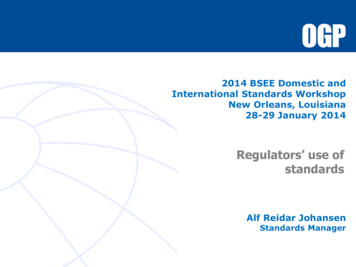
Transcription
2014 BSEE Domestic andInternational Standards WorkshopNew Orleans, Louisiana28-29 January 2014Regulators’ use ofstandardsAlf Reidar JohansenStandards Manager
Regulators examinedThirteen national regulators' examined withfocus on the offshore petroleum industry.
Document hierarchyLawsDocuments examinedfor references tostandardsRegulationsGuidelines, NoticesNational standards, Regionalstandards, International standards,Industry standardsGroup specifications, Companyspecifications, Project specifications
Number of standardsreferenced by 213151163865000
Standards referenced by regulators2501.348 references in total to 1.142 different standards frommore than 60 different standards development organisations22520015215014559 standards fromISO TC 67100735550507 3 335332635449253 627 2926144 33 4114 7 7 3146710 64 3 EMANFPANOHSCNORSOKNSNZSMILOIMLOLFUKOOAULOther0
Definition challenges ! API Shall As used in a recommended practice, “shall” denotes a minimumrequirement in order to conform to the RP.API Should As used in a recommended practice, “should” denotes arecommendation or that which is advised but not required in order toconform to the RP.ISO Shall used to indicate requirements strictly to be followed in order toconform to the document and from which no deviation is permitted.ISO Should used to indicate that among several possibilities one isrecommended as particularly suitable (abbreviated).ISO Must Do not use “must” as an alternative for “shall”. PSA Shall conveys a requirement of law or regulationsor the authorities’ interpretation of requirements thatallow for no other solutions.PSA Should means the authorities’ recommended mannerof fulfilling the function requirement. Alternative solutionswith documented equivalent functionality and quality canbe employed. BOEMRE: The terms should and shall mean must!
Origin of standards referencedIndia (OISD);144UK; 106US, 414Austalasia, 20Brazil, 7N orway, 90Canada, 25
Standards most frequently used5. API Spec 6A Wellhead and Christmas Tree Equipment (ISO 10423)IMO Mobile Offshore Drilling Units (MODU) Code4. API RP 14B Design, Installation, Repair and Operation of Subsurface Safety ValveSystems (ISO 10417)API Spec 17J Unbonded Flexible Pipe (ISO 13628-10)IEC 60331-11 Fire resisting characteristics of electric cablesAPI RP 14C Analysis, Design, Installation, and Testing of Basic Surface SafetySystems for Offshore Production Platforms (ISO 10418)API RP 521 Guide for Pressure-Relieving and Depressuring Systems (ISO 23251)API Spec 14A Subsurface safety valves (ISO 10432)NFPA 13 Installation of sprinkler systemsANSI/ASME VIII-1 Pressure VesselsNACE MR 01-75 Standard Material Requirements, Metals for Sulphide StressCracking and Stress Corrosion Cracking Resistance in Sour Oilfield Environments(ISO 15156)
Duplicating standards –Pipeline transportation systems ANSI/ASME B31.4 Liquid Transportation Systems for HydrocarbonsANSI/ASME B31.8 Gas Transmission and Distribution Piping SystemsAPI RP 1102 Liquid Petr. Pipelines Crossing Railroads and HighwaysAPI RP 1111 Offshore Hydrocarbon PipelinesCAN/CSA-Z184-92, Gas Pipeline Systems;CAN/CSA-Z187-M87 Offshore Pipelines (replaced by Z662-07)DNV OS-F101 Submarine Pipeline SystemsEN 14161 Pipeline Transportation Systems (EN adoption of ISO 13623) ISO 13623 PNGI – Pipeline transportation systems NEN 3650 Requirements for pipeline systemsNZS 5223 Code of Practice for HP Gas and Petroleum Liquids PipelinesPD 8010-2 Code of practice for pipelines: Subsea pipelines
Danish-Norwegian-UK referencesFew common referencesDK-UK, 13N O-UK, 37DK-N O, 15All, 6UK, 236Denmark, 28N orway, 130DK NO UK reference 465 standard titles in total
Standards referenced within theOil & Gas industry responsibilityOLF, 3OGP, 2OIML, 3OMH EC, 1UKOOA, 27OCIMF, 2API, 225N ORSOK, 49ISO, 59IEC, 7IADC, 1APPEA, 1About 30% of all referencesO&G industry responsibility
Main findings 1.348 references in total.From more than 60 organisations.1.142 of these are to different titles.Only 13% referenced by two or moreregulators. Industry 44%, national 35% and internationalstandards referenced 21%. Most regulators use undated references tostandards. Referenced standards appear to be voluntary inmost of the regulatory regimes, i.e. alternativereferences may be used.
Survey conclusion Regulators make good use of standards! Little harmonization by regulators in their use ofstandards. Diversity of references provides additional workfor global operators. A majority of reference standards are from US. Duplication of standards. References to international standards haveincreased compared to earlier analysis.
Proposals Encourage regulators to participate actively ininternational standards work. Regulators to make proposals for revisions ornew standards when deemed necessary. Encourage regulators to make references tomore globally relevant standards. Make IRF list of jointly preferred referencestandards. Undated references will allow quicker adoptionof latest technology. Agree “shall” and “should” definitions. IRF should liaise with ISO/TC67.
IRF Strategic agendaVancouver 2010Following the conference, IRF members met andapproved a strategic agenda focusing on thefollowing topics: Safety culture and leadershipBOP integrity and operational issuesPerformance indicatorsOperator competency/capacity criteriaUse of standards and industry best practice.
Joint IRF/ISO/OGP presentationStandards & Best PracticesIRF Summit Conference, Stavanger,4-5 October 2011 Jan de Jong, SODMSteve Walker, UK HSEAlf Reidar Johansen, OGPNeil Reeve, ISO/TC6717
Concluding presentation proposals1.2.Support the ISO (and IEC) standards systemCreate a standing IRF “standards” sub-group-3.4.5.set clear priorities, monitor progressengage with standards committeesinfluence standards management to meet IRF needsDevelop questionnaire for IRF members(standards usage)Consider response to OGP Report“Regulators’ use of standards”; and considermaking “list”Distinguish roles on “Good practice” and“Best practice”18
IRF Members’ ResolutionsStavanger 2011 IRF committed to supporting the ISOstandards system (and IEC for electricalissues) as the principal system for offshoreregulators to support in order to achieveglobally agreed offshore standards. However, IRF recognised the crucial role thatrelevant national and regional standardswould continue to play whilst no equivalentISO standards existed.
Thank you for listeningQuestions?Alf Reidar JohansenOGP Standards ManagerEmail: arj@ogp.org.ukMobile: 47 95 029 079
References Regulators’ use of standards. OGP Report No. 426, March2010. http://www.ogp.org.uk/pubs/426.pdf OGP Position paper on the development and use ofinternational standards. OGP Report No. 381. May 2007.http://www.ogp.org.uk/pubs/381.pdf ISO publication: Using and referencing ISO and IECstandards for technical ink/fetch/2000/148478/6301438/docs/ISOandIEC standards for technical regulations en.pdf ISO/IEC Inventory of studies on the economic and socialbenefits of ts s1.html
API RP 1102 Liquid Petr. Pipelines Crossing Railroads and Highways API RP 1111 Offshore Hydrocarbon Pipelines CAN/CSA-Z184-92, Gas Pipeline Systems; CAN/CSA-Z187-M87 Offshore Pipelines (replaced by Z662-07) DNV OS-F101 Submarine Pipeline Systems EN 14161 Pipeline Transportation Systems (EN adoption of ISO 13623)
